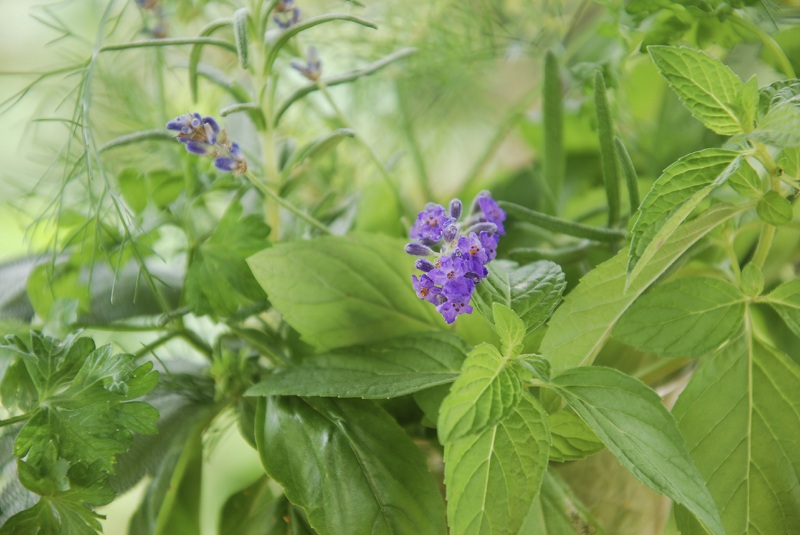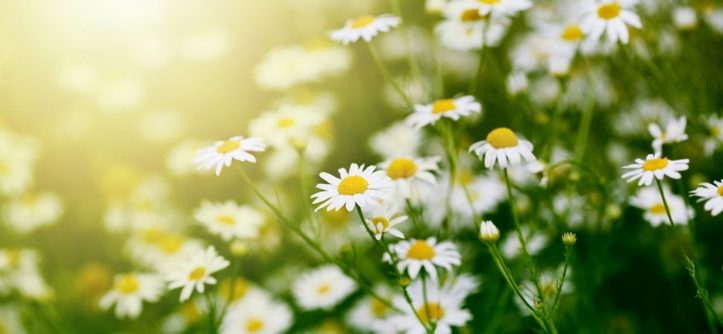The cultivation of aromatic and medicinal plants offers many advantages besides the economic and health benefits, due to the characteristics of these plants. So we developed this little guide so that you can design and carry out your aromatic and medicinal garden at home.
It is not necessary to have a very large land or invest a lot of money. Water, light and a good selection of plant species with beneficial properties for different ailments, can make your patio a real “green pharmacy”.
In a small space, an orchard of these characteristics can easily be integrated into a part of the existing orchard or inside the house, for example, taking advantage of windows and other spaces with enough light for growing potted herbs.
Why make an orchard of aromatic plants at home?
- They are a living source of aromas and flavors and a natural pharmacy.
- Most are small and require little space for cultivation.
- A large number of them are perennial, biennial or are grown as perennials.
- Large resources are not needed, especially if they are organically grown organically.
- They are ornamental, they offer fragrances, colors, different shapes that brighten the habitat and have multiple uses.
They are magnificent companion plants of other crops and some exercise biological control of pests and repel insect.
Gardens as old and famous as the hanging gardens of Babylon and the floating gardens of Xochimilco, unlike what some suppose, were not only cultivated with ornamental plants, they were full of edible, aromatic and medicinal plants. The orchards or gardens of aromatic and medicinal plants were developed throughout the history of humanity, from those associated with temples to proportional sacred plants of religious rituals or those that allowed embalming the bodies of Egyptian pharaohs even the most modern ones that served as a material base for the study of botany and medicine in European universities and that later became botanical gardens.
Check This Out: The natural alternate of painkillers
Designing the orchard of aromatic and medicinal plants.
There are currently many types of gardens of aromatic and medicinal plants. The shape, size, location, number of plants, the association of them, colors, aromas, in short, the design we make of the garden, depends on our tastes, our creativity, and our needs or preferences.
In any case, we always recommend stopping to think about the initial design based on the conditions and resources of the selected place. The design of the garden or garden is basic to achieve a good combination of distraction, productivity, and efficiency.
In the designs of plant gardens for culinary and medicinal use, the plants should be located as close as possible to the kitchen of the house or premises that play the same role, so that an easy step is achieved through the roads or paths to allow us to harvest or cut plants to fit our needs.
The plants that are most used or that require more work, such as the annual plants that are planted every year (eg, parsley, celery or others), are placed on the edges or on the trails of the roads.
The orchard where aromatic and medicinal plants of multipurpose nature are mixed can be designed in the spiral, especially for places that have little space. It is ornamental and practical. The original ideas of this garden have come to us from one of the Australian creators of Perm culture:
These spirals are constructed by selecting a space of approximately 2 m in diameter and they are made into spiral beds delimited by stones and filled with fertilized soil until reaching approximately 4 levels or floors that reach a total height of around 1 m high.
In these spirals, almost all the plants that are needed are sown. The plants are located according to the botanical configuration of each of them, taking into account their height, which provides shade over the others and other characteristics.
The orchards or gardens in the form of borders or clumps that can be delimited with stones on their outer edge have also been widely used for these purposes, especially for planting perennial plant herbs.
Orchards in containers such as clay pots, vertical tubes, old tires, boxes and any other type of container, are widely used in places that have little space or do not have stone beds with soil. This is the case of cemented patios, balconies, roofs and others. If the spaces are very limited, it is possible to grow many plants at different heights of the level of the floor, on the walls, hanging, in steps and in many other ways.
Irrigation of medicinal plants
Most are native to Mediterranean climates and need little water to live, except mint and parsley that need more moisture. If you cultivate them in a pot, place ceramic pieces in the bottom of the container to achieve greater drainage.
It is recommended to water them in the first hours of the morning. They are plants that depend a lot on the climatic conditions, for that reason for its irrigation the observation of the conditions of humidity of the earth is very important.
Cultivation and fertilization of aromatics
They need little fertilizer, so they do not lose the aroma and flavor. Fertilizing the soil once a year is enough. If they are fertilized in winter, it is convenient to use organic fertilizer and if you use mineral fertilizer you can do it in autumn or spring.
In pots, renew the surface of the earth, (3 or 4 cm.) Every so often and it is favorable to clean the earth of bad weeds.
For the orchards, it is convenient to till the soil minimum 2 times a year, to aerate it. It is very propitious to place the crop mulching or mulching: pine bark, straw, black plate, etc. This serves to maintain humidity and provide some hummus.
Varieties of medicinal plants for our aromatic garden
As we are before a very extensive list, I have put examples of plants very common in the kitchen that we should have in our garden:
The Chive, from the onion family, is ideal for salads and tortillas.
The Cilantro or Chinese parsley is used mainly in Asian cuisine. It is said to have aphrodisiac power. The dry seed is the most used part. Its infusion is digestive. Its essence is used in the pharmaceutical industry and in perfumery.
The basil helps digestion. It gives flavor to seafood, salads, soups, and pasta.
The ideal Mint for frozen drinks and fruit salads. It is stimulating, stomachic and antispasmodic. In infusion, it is indicated in cases of indigestion and/or aerophagia.
The Parsley, characteristic of our kitchens, simply “goes with everything”. It is used to soothe a toothache caused by tooth decay, to stop milk flow and nosebleeds.
El Romero, ideal for tomato sauces. It has a strong aroma, try it with goat cheese.
The Tomatillo for fish, eggs, chicken, and fresh fruit sorbets. The infusion of stems and leaves promotes digestion and is a good calming cough, respiratory irritations, and colds.
The Chervil always added after cooking, rich in vitamin is perfect for sauces, soups, vegetables, and fish. It is stimulating, cleansing, digestive, and diuretic. The own juice of the plant, as well as its infusions, are an effective lotion against the aging of the skin.
The Eneldo, the inexcusable companion of the salmon. Combine it also with herrings or river crabs.
The Oregano is used in dry although its smell is more pronounced when it is fresh. Perfect for tomato, cheese, vegetables, and meat. It is rich in essential oil, carminative, stomach, and expectorant. In infusion, it is used for a cough, bronchitis, insomnia, and aerophagia. Externally, in the form of oil, ointment or poultice, relieves various conditions such as rheumatism, joint pain, and headache.
The Melissa has sedatives and tranquilizers properties of the nervous system functions. Fight insomnia and anguish.
The Salvia is used as a digestive tonic, also antispasmodic and antiseptic, so it serves to wash wounds.
You May Read Also: Why Are You Still Pulling The Shell Of The Pomegranate?
The Calendula is antiseptic – inflammatory and healing. It is used for ulcers and external wounds.
The Lavender, infusion and immersion baths have sedative properties. It is also used externally for its antiseptic properties, to wash and clean wounds.
Another good idea is to grow these plants directly in the kitchen if we have enough light, it is very practical and very beautiful.
Well, I hope you are encouraged to make a small garden that is of this type of plants and serve this simple guide, any questions, or questions on the subject do not hesitate to consult and try to answer properly so that your garden is a success.




Leave a Reply